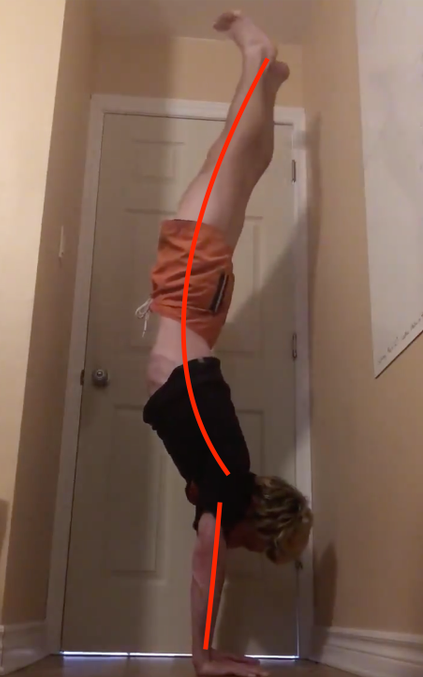Notes on Cohousing and Coliving
In pursuit of a more perfect union, let me live with my best friends.
Immediately recognizable, the handstand is the point of entry for gymnastics.

Start in a half lunge position with your dominant foot forward, front leg bent. Your locked out arms should be extended over your head. In a continuous motion, lower your hands to the ground shoulder-width apart, slightly forward of your front foot; as soon as your hands are on the ground, kick the back foot up and overhead with enough force to carry your body to its inverted, stacked position over your locked out arms and hands. Here’s a video demonstration.
There are three very common stumbling blocks: fear of inversion, shoulder immobility which precludes a proper stacked body, and strength and conditioning deficits in the arms and upper body.
“When a gymnast is stuck, it’s one of three things: she needs to be smarter, needs to be stronger, or needs to be braver.” - Coach Larry
Inverting is scary. Without proper precaution, you risk head and neck injury. Keep your arms and elbows locked and extended. Practice falling. A safe training environment can mollify the fear, permitting the athlete to practice the skill with proper commitment. A safe environment could include a mat, the area immediately adjacent to your bed (where a fall would mean landing on your mattress), or outside on some grass. Practice exposure therapy: forward rolls simulate the feeling of being upside down. And, of course, the wall: with your back to it, place your hands on the ground and slowly walk your feet up.
I find shoulder mobility is a significant constraint to a balanced handstand, especially for adults with chronically inflexible joints, shoulder and otherwise, from a lifetime of relative neglect. That means in the inversion, instead of the 180° angle, the athlete has a partially closed shoulder position. This throws what would normally be a simply balanced shape out of alignment. Imagine if instead of standing upright, you closed your hips and threw your butt back. This would require a compensating force to maintain balance, so your chest must come forward. Similarly, a handstand with a closed shoulder necessitates a compensating force: an arched back.

In a handstand with closed shoulders, the body is not stacked in an efficient way. The untrained athlete must compensate, often making large, sudden movements in a search for balance. Without a wall, the athlete will fall. Consider the effortlessness of standing. Besides a slightly engaged core, the only work being done is in the points of contact with the floor—your feet, ankles—making slight adjustments to keep you in balance. The hips are open, the body is stacked in alignment. This principle applies to the inversion. My preferred shoulder mobility exercises include these weighted “shoulder openers” , the back bridge, andthe cat stretch.
Your feet have undergone a lifetime of keeping you upright. Similarly, your hands, wrists, arms, and core need training to provide you a handstand.
And post your progress. Nothing like social support for encouragement, not to mention the elated feeling when you discover how much you’ve improved (video from the first week of my handstand push-up; six weeks prior to this video I could barely hold a handstand).
In pursuit of a more perfect union, let me live with my best friends.
Thoughts and practical advice on a gymnast’s core compentency.
My intuitions around therapy, emotional support, and chatbots.
An interview with Howard Baetjer
Max Efremov’s book review of Ross Douthat’s The Decadent Society
An interview with Tyson Edwards, YouTuber and All-Around Athlete
Folks I pay attention to.
A brief survey of Richard Schwartz’s Internal Family Systems (IFS) therapy.
An interview with Alexey Guzey, researcher and writer.
Intermittent fasting for a world stuck at home.
An interview with Luke O’Geil, gymnastics coach and gymnast strength trainer.
There’s strong, there’s really strong, and then there are gymnastics rings specialists.
In extremis, rising to the occasion with a ready mind.
Why on-the-job skills aren’t the only skills to keep sharp while job searching.
A search tool centralizing information pertaining to internationally sanctioned entities.
Thoughts on the (in)feasibility of any amendment to the US Constitution.
An interview with Scott Sumner, a monetary economist.
The details of a day in the life of a Lambda School student.
Progress in gymnastics is not only within reach of most people who can walk but, with proper coaching, can be the most rewarding sport you train for.
Scathingly funny.